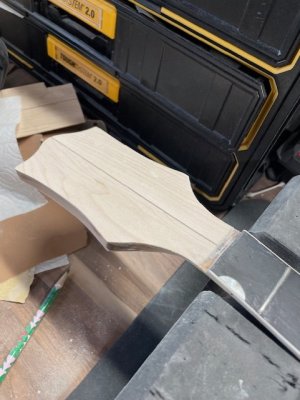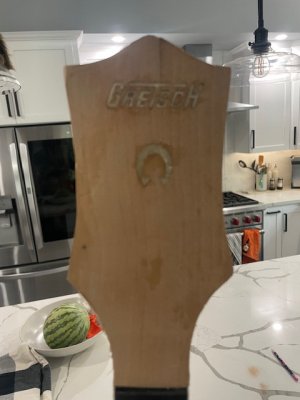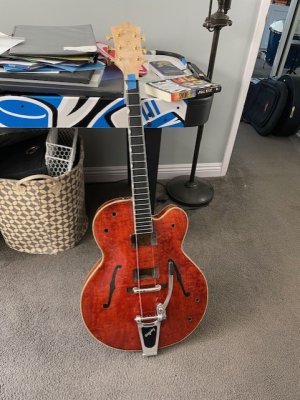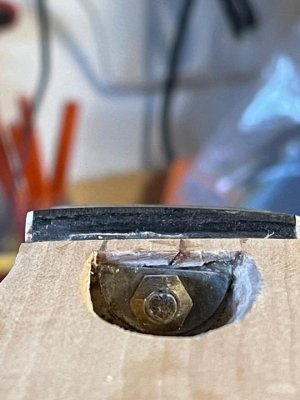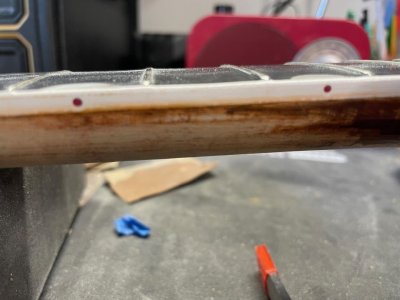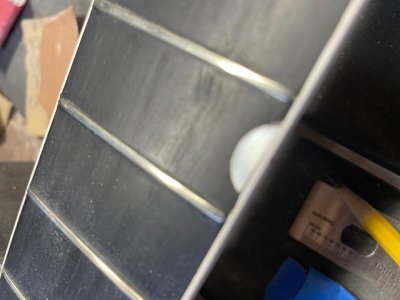Inlays are usually 2-3mm thick. If the headstock veneer is 3mm thick, then the inlays are probably 1.5-2mm thick. You could probably thin the faceplate .5-1mm more and be pretty safe not going through the inlays. Then remove about .5-1mm from the back and you should be good to go. I really don't think removing that little from the back is going to weaken it and for sure removing some from the front won't weaken it any (because the front is under compression).
Countersinking the tuner washers is a way to solve the problem, but it will be very tricky since the tuner holes are already drilled. I'm not saying it can't be done, in fact before I read Chris' post I was going to suggest that as an option. It would be pretty easy if the tuner holes hadn't been drilled yet, but now it's going to be very difficult to make them perfectly concentric with the existing holes. If you opt to do it this way, I'd recommend using a milling bit (flat end cutting) and clamp your headstock to the drill press so it doesn't move AT ALL.
But hey, you've done a great job so far and whichever way you decide to fix this, I'm sure you'll be able to do it.
Good luck.
